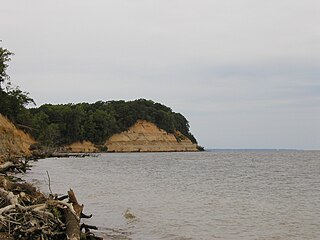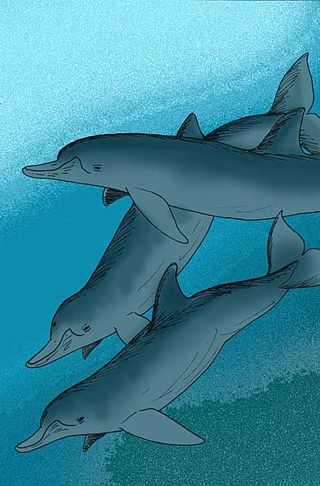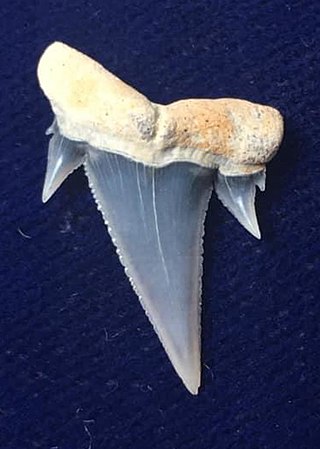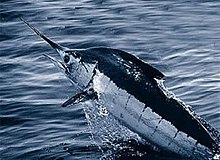
Calvert Cliffs State Park is a public recreation area in Lusby, Calvert County, Maryland, that protects a portion of cliffs that extend for 24 miles along the eastern flank of the Calvert Peninsula on the west side of Chesapeake Bay from Chesapeake Beach southward to Drum Point. The state park is known for the abundance of mainly Middle Miocene sub-epoch fossils that can be found on the shoreline.

Pseudhipparion is an extinct genus of three-toed horse endemic to North America during the Miocene. They were herding animals whose diet consisted of C3 plants. Fossils found in Georgia and Florida indicate that it was a lightweight horse, weighing up to 90 pounds. In 2005, fossils were unearthed in Oklahoma. Seven species of Pseudhipparion are known from the fossil record which were very small, following the trend of Bergmann's rule.

Cormohipparion is an extinct genus of horse belonging to the tribe Hipparionini that lived in North America during the late Miocene to Pliocene. This ancient species of horse grew up to 3 feet long.

Australodelphis mirus is an extinct Pliocene dolphin. A. mirus is known from fossils found in the Sørsdal Formation, Mule Peninsula, Vestfold Hills, East Antarctica. The genus has been described as an example of convergent evolution with beaked whales.

Kentriodontidae is an extinct family of odontocete whales related to modern dolphins. The Kentriodontidae lived from the Oligocene to the Pliocene before going extinct.

Otodus chubutensis, meaning "ear-shaped tooth of Chubut", from Ancient Greek ὠτ and ὀδούς – thus, "ear-shaped tooth", is an extinct species of prehistoric megatoothed sharks in the genus Otodus, that lived during Oligocene, Miocene, and Pliocene epochs, approximately 28 – 5 million years ago. This shark is considered to be a close relative of the famous prehistoric megatoothed shark, O. megalodon. However, as is the case with O. megalodon, the classification of this species is disputed.

Thecachampsa is an extinct genus of gavialoid crocodylian, traditionally regarded as a member of the subfamily Tomistominae. Fossils have been found from the eastern United States in deposits of Miocene age. Those named in the 19th century were distinguished primarily by the shape of their teeth, and have since been combined with T. antiquus. More recently erected species were reassigned from other genera, although their assignment to Thecachampsa has since been questioned.

Rudicetus is an extinct genus of cetacean.

The Chesapeake Group is a geologic group in Maryland, Virginia, Delaware, and North Carolina. It preserves mainly marine fossils dating back to the Miocene and Pliocene epochs of the Neogene period. This group contains one of the best studied fossil record of Neogene oceans in the world. Professional Paleontologists and amateur fossil hunters alike collect from this group intensely. The Calvert Cliffs stretch the length of Calvert County, Maryland and provide the best continuous stretch of the Calvert, Choptank, and St. Marys Formations. Ward (1985) recommended including the Old Church Formation in this group.

The Choptank Formation is a geologic formation in Virginia and Maryland. It preserves fossils dating from the Miocene epoch of the Neogene period.
The Ashley Formation is a geologic formation in South Carolina. It preserves fossils dating back to the Paleogene period.
The Parachucla Formation is a geologic formation in Florida. It preserves fossils dating back to the Paleogene period.
The Astoria Formation is a geologic formation in Washington state & Oregon. It preserves fossils dating back to the early to middle Miocene.
Araeodelphis is an extinct genus of river dolphin from the early Miocene of the US Eastern Seaboard.

Lophocetus is an extinct genus of dolphin belonging to the clade Delphinida that is known from late Miocene (Tortonian) marine deposits in California and Maryland. Although usually placed in Kentriodontidae, recent studies have found it only distantly related to Kentriodon.

Alopias palatasi commonly referred to as the serrated giant thresher, is an extinct species of giant thresher shark that lived approximately 20.44 to 13.7 million years ago during the Miocene epoch, and is known for its uniquely serrated teeth. It is only known from such isolated teeth, which are large and can measure up to an excess of 4 centimetres (2 in), equating to a size rivaling the great white shark, but are rare and found in deposits in the East Coast of the United States and Malta. Teeth of A. palatasi are strikingly similar to those of the giant thresher Alopias grandis, and the former has been considered as a variant of the latter in the past. Scientists hypothesized that A. palatasi may have had attained lengths comparable with the great white shark and a body outline similar to it.

The Calvert Formation is a geologic formation in Maryland, Virginia, and Delaware. It preserves fossils dating back to the early to middle Miocene epoch of the Neogene period. The formation is a destination for amateur fossil hunters as well as professional paleontologists. It is one of the three formations which make up the Calvert Cliffs, all of which are part of the Chesapeake Group.

Carcharoides is an extinct genus of mackerel shark which lived during the Oligocene and Miocene epochs. It is a widespread genus, known from specimens in North and South America, Europe, Africa, and Australia. It is most common in the European portion of its range, being comparatively uncommon in other places. It is only known from isolated teeth, which are relatively delicate.
Stenasodelphis is an extinct genus of pontoporiid dolphin from the mid-late Miocene epoch. Its name roughly translates to "the narrow-nosed dolphin." The genus is currently monotypic, containing only the species S. russellae. The specific epithet honors Mrs. Jean Hopper, who discovered the holotype. It was found in material derived from zone 22-23 of St. Marys Formation, which dates to the early Tortonian.

Messapicetus is an extinct genus of beaked whale from the Late Miocene. It currently holds two species, M. longirostris from the Tortonian of Italy and M. gregarius from the Pisco Formation of Peru. However, a third unnamed species is represented in the St. Marys Formation of Maryland known from fragmentary material. M. gregarius is sexually dimorphic, males having tusks which are hypothesized to have been used in intraspecific combat for mates as in extant (living) beaked whales.



















































